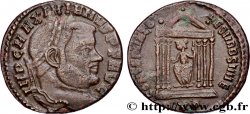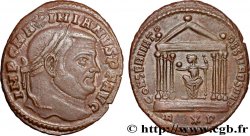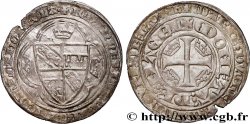v49_0746 - MAXIMIANUS HERCULIUS Follis ou nummus
MONNAIES 49 (2011)
Starting price : 145.00 €
Estimate : 250.00 €
Realised price : 145.00 €
Number of bids : 1
Maximum bid : 165.00 €
Starting price : 145.00 €
Estimate : 250.00 €
Realised price : 145.00 €
Number of bids : 1
Maximum bid : 165.00 €
Type : Follis ou nummus
Date: avril
Date: 307
Mint name / Town : Bretagne, Londres
Metal : copper
Diameter : 25,00 mm
Orientation dies : 6 h.
Weight : 6,97 g.
Rarity : R1
Emission: 3e
Coments on the condition:
Exemplaire sur un flan large et ovale, irrégulier bien centré des deux côtés avec les grènetis visibles. Beau portrait de Maximien. Joli revers inhabituel de Maximien Hercule. Patine marron
Catalogue references :
Obverse
Obverse legend : D N MAXIMIANO P F S AVG.
Obverse description : Buste lauré et cuirassé de Maximien Hercule à droite, vu de trois quarts en avant (B*).
Obverse translation : "Domino Nostro Maximiano Pio Felici Seniori Augusto", (À notre seigneur Maximien pieux heureux auguste le plus ancien).
Reverse
Reverse legend : HERCVLI CONSERVATORI// PLN.
Reverse description : Hercule nu debout de face, la tête tournée à gauche, la peau de lion de Némée sur l’épaule, tenant un arc de la main gauche et appuyé de la main droite sur sa massue.
Reverse translation : "Herculi Conservatori”, (À l’Hercule conservateur).
Commentary
Poids léger. Rubans de type 3. Cuirasse et épaulière cloutées. Ptéryges fines.








 Report a mistake
Report a mistake Print the page
Print the page Share my selection
Share my selection Ask a question
Ask a question Consign / sell
Consign / sell
 Full data
Full data











